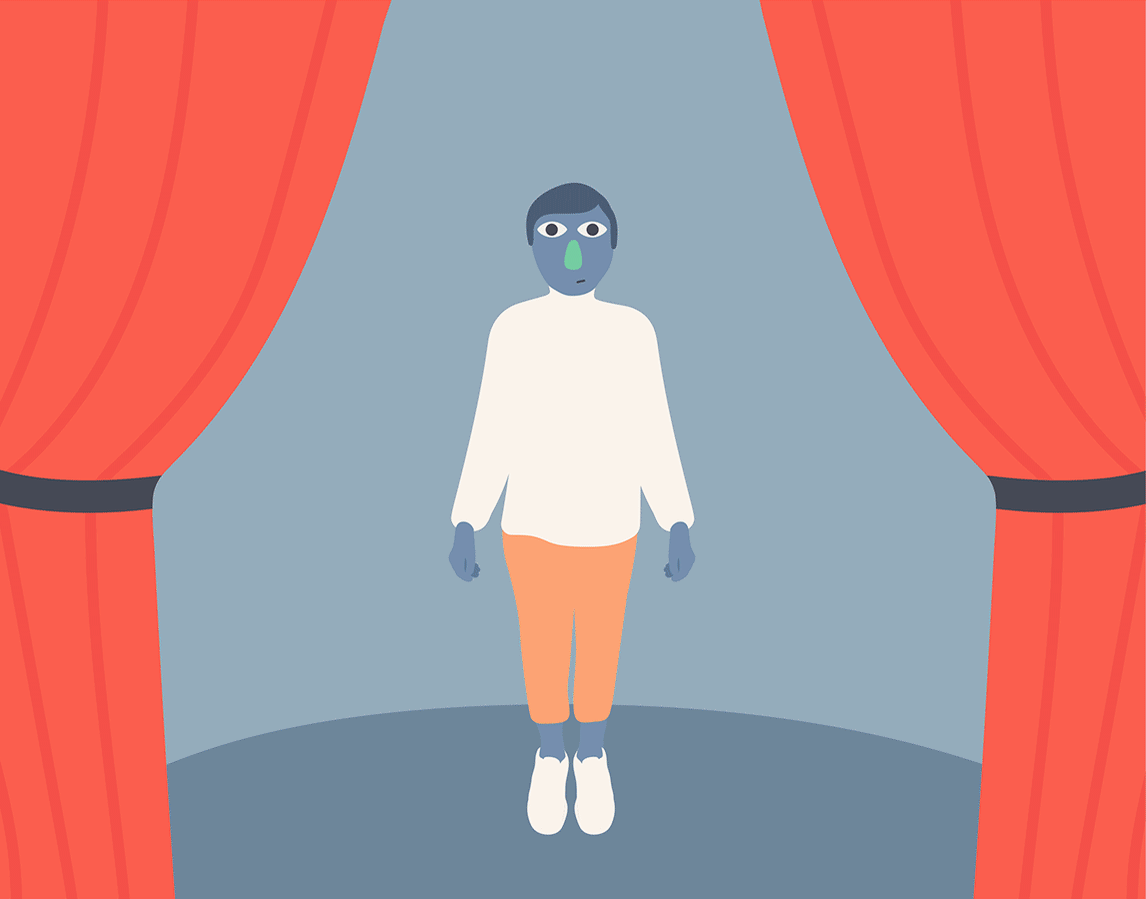Too shy to speak up? Read this.
Whether presenting a TED talk, pitching a new client, or providing feedback during a conference call, most of us dread public speaking.
That fear manifests differently in different people—sweaty palms for some, shallow breathing or butterfly-like stomach spasms in others—but it’s often a form of social anxiety because, in many cases, we may fear unfamiliar situations or judgment from others. Sadly, we aren’t very engaging or dynamic speakers when we’re nearly paralyzed with anxiety. “That person can’t really be present for the listeners because they’re worrying about their performance so much,” says Gary Genard, an actor, speech coach and creator of The Genard Method, a performance-based approach to public speaking. “It intrudes on their ability to be themselves.” If that sounds familiar, then take heart in the fact that fear of public speaking doesn’t have to keep you silent or on the sidelines. “[Those nerves] never disappears but there are certainly ways to control it and build one’s confidence,” Genard says.
Mindfulness can be effective at calming these fears. A recent study found that mindfulness techniques helped professional and hobby musicians deal with stage fright or musical performance anxiety. Another study found that mindfulness was effective at reducing signs of social anxiety disorder. Techniques like visualization and focused relaxation can help you gear up to give a presentation or speak in a meeting, but Genard says you should start by focusing on the breath. The fast, shallow breathing we often do when we’re nervous can create a shaky or high-pitched speaking voice, while deeper, more measured breathing can help bring confidence and steadiness to the voice. Plus, breathing helps calm and center us. “Breathing is the basis for our ability to settle ourselves and work against the physiological effects [of nerves] like rapid heart rate or shallow breathing,” Genard says. “It’s really hard to be present and connecting with the moment when you’re physically feeling bad. Breathing always brings us back to the present, it settles us, it allows us to connect with the moment.” Directors and actors often use the term “in the moment” to mean that someone is engaged with the present scene instead of robotically reciting lines or thinking ahead to what they’ll make for dinner. For public speaking, it means you’re connecting with and reacting to your audience, whether it’s a packed auditorium or a handful of coworkers in a board room.
Ideally, your audience is also in the moment, but “it’s much easier for the audience to be present because their sense of vulnerability and exposure isn’t activated when they’re just sitting,” Genard adds. Of course, it helps if you’re in the habit of meditating and being mindful rather than trying these techniques for the first time right before a big presentation. “If you can get in the habit of doing that, then when the speaking situation arrives and you need to be mindful, then it’s not too much of a leap,” Genard says. “The hardest time to be mindful and centered and focused is when you’re in front of an audience and you feel like you’re in a tailspin. That’s the worst moment for you to try that.” But if you’ve already developed mental memory around breathing, visualizing and noting, it’ll hopefully feel like second nature, even in a high-pressure situation.



Be kind to your mind
- Access the full library of 500+ meditations on everything from stress, to resilience, to compassion
- Put your mind to bed with sleep sounds, music, and wind-down exercises
- Make mindfulness a part of your daily routine with tension-releasing workouts, relaxing yoga, Focus music playlists, and more
Meditation and mindfulness for any mind, any mood, any goal

Stay in the loop
Be the first to get updates on our latest content, special offers, and new features.
By signing up, you’re agreeing to receive marketing emails from Headspace. You can unsubscribe at any time. For more details, check out our Privacy Policy.
- © 2025 Headspace Inc.
- Terms & conditions
- Privacy policy
- Consumer Health Data
- Your privacy choices
- CA Privacy Notice
